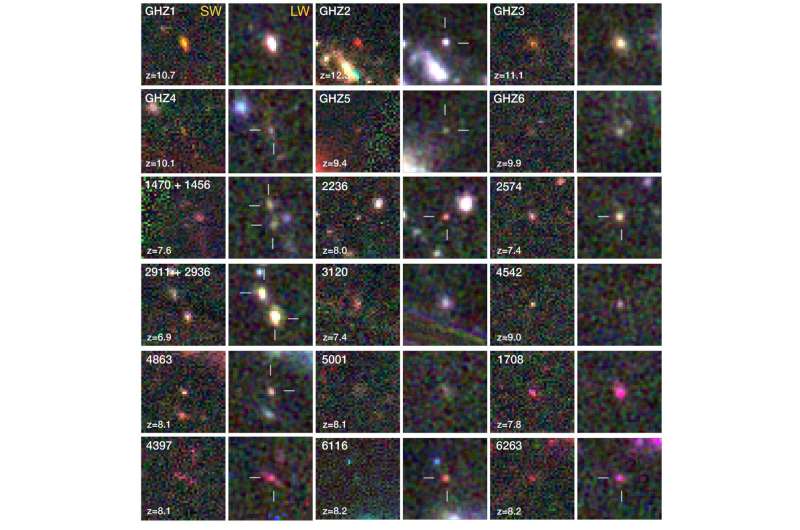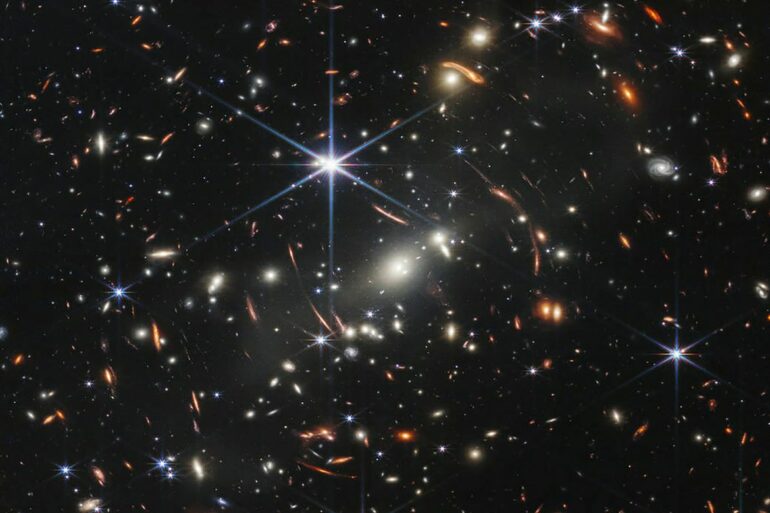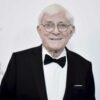The earliest galaxies were cosmic fireballs converting gas into stars at breathtaking speeds across their full extent, reports a UCLA-led study to be published in a special issue of The Astrophysical Journal.
The research, based on data from the James Webb Space Telescope, is the first study of the shape and structure of those galaxies. It shows that they were nothing like present-day galaxies in which star formation is confined to small regions, such as the constellation of Orion in our own Milky Way galaxy.
“We’re seeing galaxies form new stars at an electrifying pace,” said Tommaso Treu, the study’s lead author, a UCLA professor of physics and astronomy. “Webb’s incredible resolution allows us to study these galaxies in unprecedented detail, and we see all of this star formation occurring within the regions of these galaxies.”
Treu directs the GLASS–JWST Early Release Science Program, whose first results are the subject of the special journal issue. Another UCLA-led study in the issue found that galaxies that formed soon enough after the Big Bang—within less than a billion years—might have begun burning off leftover photon-absorbing hydrogen, bringing light to a dark universe.
“Even our very best telescopes really struggled to confirm the distances to such far away galaxies, so we didn’t know whether they rendered the universe transparent or not,” said Guido Roberts-Borsani, a UCLA postdoctoral researcher who led the study. “Webb is showing us that not only can it do the job, but it can do it with astonishing ease. It’s a game changer.”
Those findings are two of many breathtaking discoveries by UCLA astrophysicists who are among the first to peer through a window to the past newly opened by Webb.

For each galaxy we show a color composite image based on the short wavelength camera (B=F115W,G=F150W,R=F200W) and one based on the long wavelength camera (B=F277W,G=F356W,R=F444W). Individual images are degraded to the lower resolution of each camera (i.e., F200W and F444W, respectively). Postage stamps are 2.4” on a side. Pixels are 31 mas and 63 mas respectively for the short and long wavelength images. © T. Treu et al
Webb is the largest near-infrared telescope in space, and its remarkable resolution offers an unparalleled view of objects so distant that their light takes billions of years to reach Earth. Although those objects have aged by now, light from only their earliest moments has had enough time to travel through the universe to end up on Webb’s detectors. As a result, not only has the Webb functioned as a sort of time machine—taking scientists back to the period shortly after the Big Bang—but the images it’s producing have become a family album, with snapshots of infant galaxies and stars.
GLASS–JWST was one of 13 Early Release Science projects selected by NASA in 2017 to quickly produce publicly accessible datasets and to demonstrate and test the capabilities of instruments on the Webb.
The project seeks to understand how and when light from the first galaxies burned through the hydrogen fog left over from the Big Bang—a phenomenon and time period called the Epoch of Reionization—and how gas and heavy elements are distributed within and around galaxies over cosmic time. Treu and Roberts-Borsani use three of the Webb’s innovative near-infrared instruments to take detailed measurements of distant galaxies in the early universe.
The Epoch of Reionization is a period that remains poorly understood by scientists. Until now, researchers have not had the extremely sensitive infrared instruments needed to observe galaxies that existed then. Prior to cosmic reionization, the early universe remained devoid of light because ultraviolet photons from early stars were absorbed by the hydrogen atoms that saturated space.
Scientists think that sometime within the universe’s first billion years radiation emitted by the first galaxies and possibly by the first black holes caused the hydrogen atoms to lose electrons, or ionize, preventing photons from “sticking” to them and clearing a pathway for the photons to travel across space. As galaxies began to ionize larger and larger bubbles, the universe became transparent and light traveled freely, as it does today, allowing us to view a brilliant canopy of stars and galaxies each night.
Roberts-Borsani’s finding that galaxies formed faster and earlier than previously thought could confirm that they were the culprits of cosmic reionization. The study also confirms the distances to two of the farthest galaxies known using a new technique that allows astronomers to probe the beginning of cosmic reionization.
More information:
T. Treu et al, Early Results From GLASS-JWST. XII: The Morphology of Galaxies at the Epoch of Reionization, arXiv (2022). DOI: 10.48550/arxiv.2207.13527
Provided by
University of California, Los Angeles
Citation:
Webb Space Telescope reveals birth of galaxies, how universe became transparent (2022, November 18)



